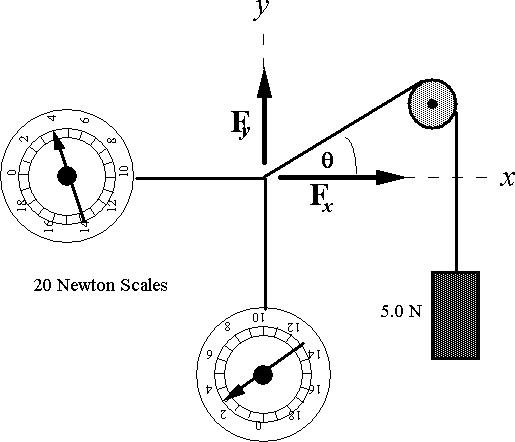Magnetic blackboard mechanics with spring balances and weights.
What it shows:
Solve a problem in composition of concurrent forces by graphical or trigonometric means.
How it works:
The blackboard mechanics set1 includes apparatus to demonstrate most of the common laws of statics and some dynamics. The pieces of apparatus are held on the blackboard by magnets and, although not large, are fairly visible in the lecture hall. A booklet with a few dozen suggested demonstration experiments is included in the set.
Illustrated below is one example of many possible setup variations. Each end of a string is attached to two large dial-type spring balances. A known weight is hung at various points on the string and the equilibrium conditions can be worked out. With the aid of a protractor, one can set up a problem and solve for the forces.
Setting it up:
The lengths of string and the positions of the scales are adjusted to yield any angles desired. The scales must be rotated so that their hooks are pulled along a straight line with the spring mechanisms. A large protractor can be held behind the strings or chalk lines can be drawn on the blackboard. With the addition of a simple pulley, one can show the resolution of a force into its vertical and horizontal components. This is diagramed below.
Comments:
It's important to sight straight back to the blackboard to avoid significant parallax errors. If possible, zero the spring scales after they are positioned as desired. When done with care, errors of 2 or 3% may be expected.
1 Klinger model KM 1500 Blackboard Mechanics set